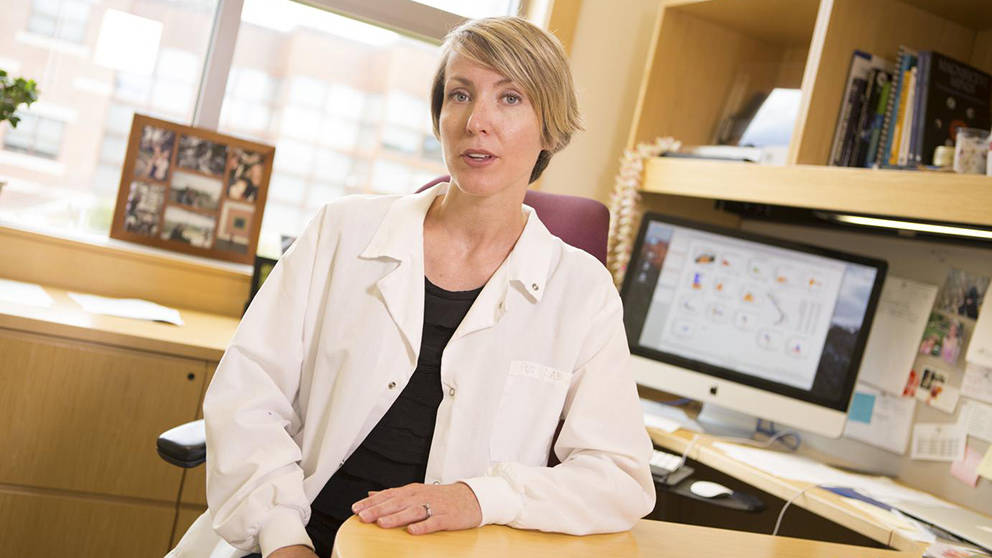Summary
As we age, certain mutations in bone marrow can give rise to rapidly expanding blood cell subpopulations, leading to a condition known as clonal hematopoiesis (CH). Some people with CH show no symptoms, but others are at very high risk of developing leukemia, particularly if additional mutations occur. While it’s currently not possible to determine who is at the highest risk, new research led by Jennifer Trowbridge provides insight into risk factors for CH-to-leukemia progression. The researchers also developed an innovative mouse model that can be used to find therapeutic targets to prevent cancer initiation.

Our bone marrow is a very busy place.
Within the marrow, hematopoietic stem cells (HSCs, cells that can divide and differentiate into all types of blood cells, including white and red blood cells) are responsible for the constant renewal of blood, and the system as a whole produces billions of new blood cells every day. But sometimes mutations enter the blood cell supply chain, which can give rise to clonal hematopoiesis (CH). In CH, populations of certain cells gain a competitive advantage through mutation and quickly grow in number.
CH is fairly common, especially in the elderly, and for many people it causes no health issues. For others, however, it greatly increases the risk for developing blood cancers such as acute myeloid leukemia (AML). Unfortunately, it’s currently impossible to determine which people with CH are at higher risk, or how to prevent progression to a cancer. Now a paper from Jackson Laboratory (JAX) Associate Professor Jennifer Trowbridge, Ph.D.Researches regulation of stem cells in the blood in normal development, aging and leukemia transformation.Jennifer Trowbridge, Ph.D., and colleagues provides insight into how cells progress from CH to cancer and presents a powerful new tool for further research.
In “Sequentially Inducible Mouse Models Reveal that Npm1 Mutation Causes Malignant Transformation of Dnmt3a-Mutant Clonal Hematopoiesis,” published in Leukemia, Trowbridge tackles a problem inherent in CH-to-leukemia research. Previous work had indicated that AML results from sequential mutations. One gives rise to CH, but another is then needed for the cells to turn cancerous. But it’s been very difficult to produce that particular sequence in the laboratory, as mice engineered to carry both mutations at the same time do not recreate the progression found in human cancers. With a new dual inducible model, however, it’s possible to dissect what happens in CH and how an additional mutation can lead to AML.
Using sophisticated genetic engineering methods, the research team developed the mouse model so that mutations in two genes can be induced at specific time points. The first gene, DNMT3A, is associated with epigenetic modifications and is commonly mutated in human CH. The second codes for the nuclear protein NPM1, and is known to be mutated in many patients with AML. By inducing the Dnmt3a mutation in the mouse first, Trowbridge was able to characterize the development of CH in the absence of other mutations. She then induced the Npm1 mutation at different time points and was able to demonstrate that extending the time between the two mutations increases the speed of AML onset. It therefore appears that an accumulation of CH-associated cellular and molecular alterations over time combines with the subsequent Npm1 mutation to cause a more aggressive malignancy.
Importantly, the mouse model data indicate traits in Dnmt3a-mutant CH that may serve as biomarkers for increased AML risk. Furthermore, the ability to control the induction of the mutations in the two genes will allow investigators to explore the mechanisms underlying cancer initiation, with the potential for finding therapeutic targets.